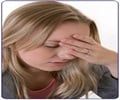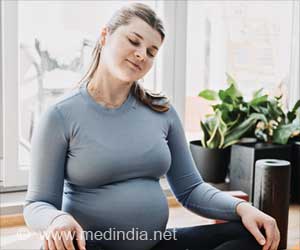Are you confused between early pregnancy and premenstrual syndrome (PMS) because they have similar symptoms such as breast tenderness, mood swings and cramps?
- Premenstrual syndrome (PMS) and early pregnancy share common symptoms like breast soreness and mood swings, but they often differ in duration and intensity
- Pay attention to signs like constipation and mood changes to differentiate between the two conditions
- Cramps during PMS tend to peak before menstruation, while early pregnancy cramps are usually felt in the lower abdomen or back
Premenstrual Syndrome
Go to source).
Identifying the Difference Between PMS and Early Pregnancy
According to experts at Lenco Diagnostic Laboratory, breast soreness, mood swings, cramps, diarrhea, and fatigue are just a few of the symptoms that both PMS and early pregnancy can share. Even so, these symptoms frequently differ between the two disorders, which might help you determine which one it is.For example, people suffering from PMS may typically discover that their constipation subsides once they begin menstruation. Constipation, on the other hand, can last throughout the first and second trimesters of pregnancy. Similarly, in the case of mood swings, length should be considered. Moodiness caused by PMS is usually transient, however, mood changes caused by pregnancy are likely to be continuous.
Some symptoms may also be different. While both kinds of breast soreness may feel like a dull, heavy ache, pregnancy-related breast tenderness is usually more long-term, localized in the nipples or areolas, and may be accompanied by changes in size or color. However, such alterations are not linked to PMS.
Cramps: Is it PMS or Early Pregnancy?
Cramps will also appear differently during PMS and early pregnancy. Cramping caused by PMS typically worsens about a day or two before your period and commonly subsides as menstruation comes to a close. According to Lenco Diagnostic Laboratory, PMS cramps are frequently more intense than early pregnancy cramps. Furthermore, the location of the cramping is frequently variable. Cramping is typically felt in the lower abdomen or lower back during early pregnancy.Finally, Robin Giles, a certified nurse practitioner with Banner University Medicine North, highlights the major distinction between PMS and early pregnancy, telling Banner Health, "The key distinction between the two, however, is that with pregnancy, your period does not occur." However, a pregnant woman may experience some mild, diluted spotting within a week or two of pregnancy. While this is not a period, it can make distinguishing between early pregnancy and PMS difficult. As a result, if you suspect you're pregnant, it's always advisable to be safe and consult with your doctor if you have any questions or concerns.
Reference:
- Premenstrual Syndrome - (https://pubmed.ncbi.nlm.nih.gov/32809533/)












